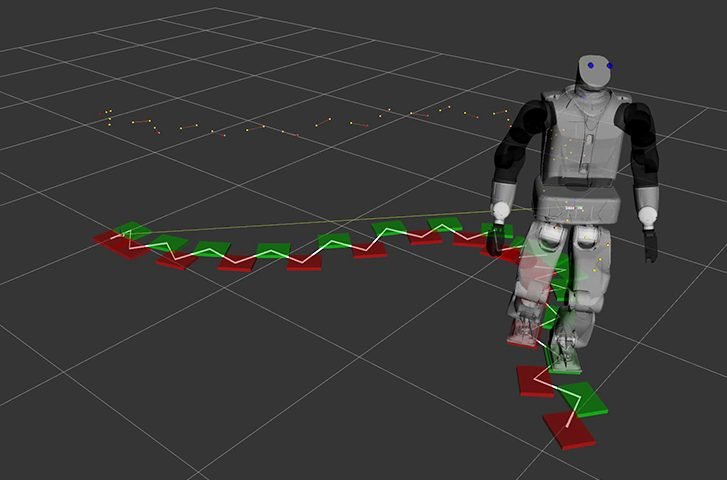
Below is an extensive list of software resources categorized by their functionality to support design, simulation, programming, AI, and collaboration in a humanoid robotics lab.
Design and Simulation Tools
Computer-Aided Design (CAD) Software
- Fusion 360: User-friendly 3D modeling and design software.
- SolidWorks: Industry-standard for mechanical design and simulations.
- FreeCAD: Open-source CAD software for 3D modeling.
- AutoCAD: For detailed 2D and 3D mechanical designs.
- Onshape: Cloud-based CAD software for collaboration.
- Blender: 3D modeling and animation software, useful for conceptual designs.
Simulation Software
- Gazebo: Advanced robotics simulation with support for sensors, environments, and dynamics.
- MATLAB/Simulink: For simulating kinematics, control algorithms, and system dynamics.
- Webots: Open-source simulation software for mobile and humanoid robots.
- V-REP/Simulink Robotics Toolbox: Modular simulation platform for robotics.
- CoppeliaSim: Multi-purpose robotics simulation software.
- NVIDIA Isaac Sim: High-performance simulation for AI-powered robotics.
- OpenRAVE: Planning and simulation for robot kinematics and dynamics.
3D Printing and Prototyping Software
- Ultimaker Cura: Slicer software for preparing 3D printing models.
- PrusaSlicer: Optimized slicing for Prusa 3D printers.
- Tinkercad: Beginner-friendly 3D modeling tool.
- Simplify3D: Advanced slicer with fine-tuning options.
Programming Tools
Integrated Development Environments (IDEs)
- Arduino IDE: For microcontroller programming.
- Visual Studio Code: Versatile IDE with extensions for various programming languages.
- PyCharm: Powerful IDE for Python, ideal for robotics.
- Eclipse IDE: For C++ and Java development.
- Atom: Lightweight and customizable text editor.
Robotics-Specific Frameworks
- Robot Operating System (ROS): Middleware for developing robot applications.
- ROS 2: The next-gen ROS, optimized for real-time performance and distributed systems.
Programming Languages
- Python: Widely used for scripting, AI, and data analysis.
- C++: For performance-critical applications like kinematics and control systems.
- MATLAB: For algorithm development and system analysis.
AI and Vision Tools
Machine Learning Libraries
- TensorFlow: Open-source library for machine learning and AI.
- PyTorch: Flexible deep learning library, ideal for robotics AI.
- Keras: High-level neural network library built on TensorFlow.
- Scikit-Learn: For machine learning and data analysis.
Computer Vision Libraries
- OpenCV: Popular library for computer vision tasks such as object detection and tracking.
- YOLO (You Only Look Once): Real-time object detection framework.
- DLib: Machine learning library for face detection and alignment.
- MediaPipe: Framework for building pipelines for vision-based projects.
Speech Recognition and Interaction
- Google Speech-to-Text: Cloud-based speech recognition API.
- Microsoft Azure Speech Services: Offers speech-to-text and text-to-speech capabilities.
- CMU Sphinx: Open-source speech recognition library.
- Dialogflow: For building conversational AI and voice-controlled systems.
Collaboration and Documentation Tools
Version Control and Code Collaboration
- GitHub: Cloud-based repository for version control and collaboration.
- GitLab: Git repository manager with built-in CI/CD features.
- Bitbucket: Version control with team collaboration tools.
Project Management Tools
- Trello: Visual task management tool for organizing projects.
- Asana: Comprehensive project management and workflow tracking.
- Jira: Advanced tool for tracking tasks, bugs, and sprints.
Documentation Tools
- Notion: Flexible workspace for note-taking, project tracking, and documentation.
- Confluence: Collaborative documentation platform for teams.
- Google Docs/Sheets: Cloud-based tools for collaborative document creation.
- Overleaf: For creating professional documentation and reports in LaTeX.
Team Communication
- Slack: Instant messaging platform for team collaboration.
- Microsoft Teams: Combines communication and project management.
- Discord: Community-focused platform for voice, video, and text chats.
Additional Resources
Hardware Integration Tools
- Firmata: Protocol for controlling Arduino from a host computer.
- PlatformIO: IDE extension for embedded development.
- mBlock: Block-based programming environment for beginners.
Educational and Learning Platforms
- Coursera: Robotics courses by top universities (e.g., Stanford’s Introduction to Robotics).
- edX: Courses like Robotics Fundamentals.
- Udemy: Affordable courses on ROS, Arduino, and AI.
- YouTube Channels: Free resources like Sebastian Lague’s Robotics Tutorials.
How to Select the Right Tools
Skill Level: Beginners should prioritize easy-to-use platforms like Tinkercad or mBlock. Advanced users can leverage ROS or MATLAB.
Project Needs: Choose tools tailored to your goals, such as vision libraries for AI-based projects or CAD software for mechanical design.
Budget: Opt for open-source or free tools where possible (e.g., FreeCAD, OpenCV, ROS) to minimize costs.
By integrating these tools into your humanoid robotics lab, you can create an efficient, well-rounded environment for design, experimentation, and innovation.
